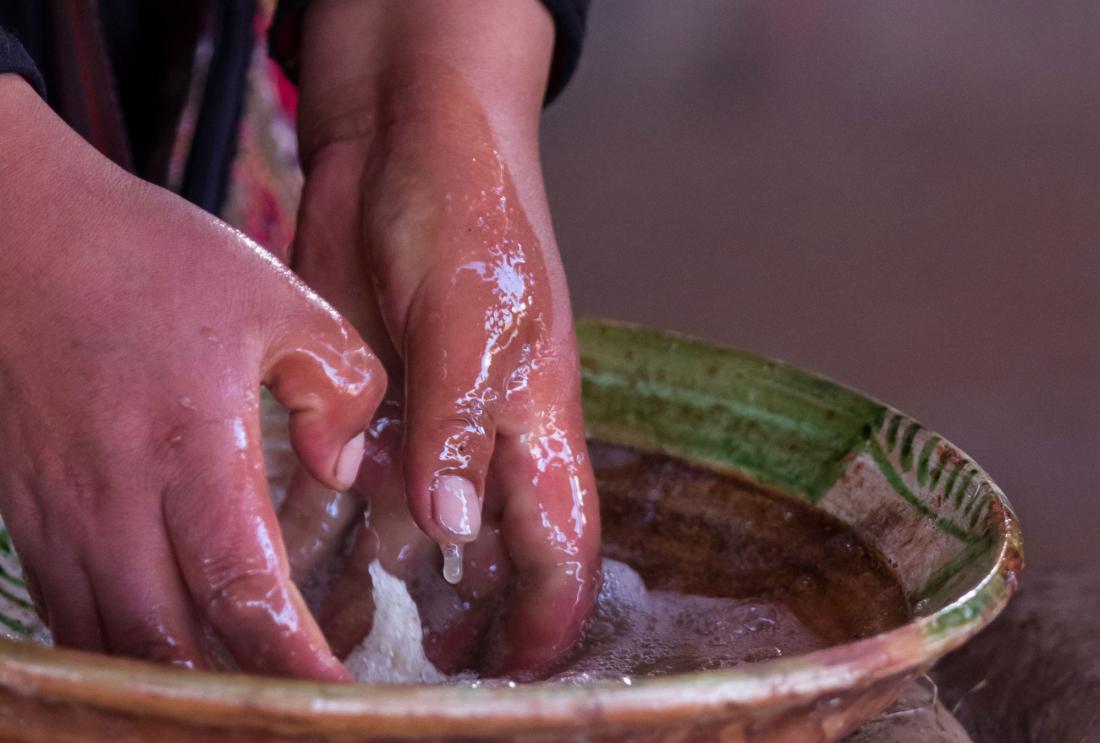Promoting Handwashing Behavior in Peru: The Effects of Large-Scale Community and School-Level Interventions
- Children under five
- Rural population
- Diarrhea
- Information
- Nudges and reminders
- Preventive health
- Training
Changing handwashing behavior is a complex phenomenon involving personal habits. Researchers evaluated the impact of a large-scale handwashing intervention in Peru that introduced an innovative mix of mass media campaigns along with more intensive community activities, including educational sessions for caregivers and a handwashing curriculum in some schools. The program was effective in reaching its targeted households, improving knowledge related to handwashing, and modifying behaviors; however, these behavioral changes did not translate into better child health.
الموضوع الأساسي
Handwashing with soap is an easy and effective way to reduce illnesses such as diarrhea and respiratory disease. However, near the time of this evaluation, the World Bank found that only 3 to 34 percent of the population in low- and middle-income countries routinely washed their hands with soap.1 Changing handwashing behavior is a complex phenomenon involving personal habits. One possible way to encourage people to wash their hands may be through intensive information campaigns that promote the importance of handwashing; these information interventions could affect handwashing knowledge and beliefs, as well as access to handwashing resources such as soap and water, leading to better handwashing behavior and less environmental contamination. However, little rigorous evidence exists on the effect of large-scale handwashing campaigns on knowledge acquisition, behavioral change, and health outcomes.
سياق التقييم
In 2008, sanitation-related illnesses were relatively common and handwashing was not among rural households in Peru. In the baseline survey for this evaluation, researchers observed handwashing with soap in only 16 percent of households during events such as eating and food preparation; people commonly believed that washing hands with just water was sufficient. Fifteen percent of children under two years of age had parasites, and 15 percent of caregivers reported that their children under five had diarrheal symptoms in the past week.
To address these challenges, the government of Peru implemented between 2008 and 2010, with technical support from the World Bank, the Global Scaling Up Handwashing Project,2 a large-scale intervention that borrowed from commercial and social marketing techniques to promote better hygiene. The program was comprised of two main components that were delivered at different administrative levels: a mass media campaign at the province level and a more comprehensive district-level community program that targeted mothers and caregivers of young children.

معلومات تفصيلية عن التدخل
Researchers partnered with the Global Scaling Up Handwashing Project in Peru to conduct a randomized evaluation of the impact of an intensive, targeted handwashing promotion campaign that included information dissemination and community training on handwashing behavior and child health. The evaluation discussed here focused on the district-level intervention. A related evaluation3 tested the effects of the mass media campaign delivered at the province level.
Among a sample of 85 rural districts in forty provinces in Peru, researchers randomly selected 44 to receive the intervention. The other districts did not receive the program and formed the comparison group. The intervention consisted of the following components:
- A mass-media campaign (including radio spots, posters, and promotional events), plus a direct consumer contact campaign;
- Training for community-based facilitators such as teachers, medical professionals, and community leaders;
- Educational handwashing sessions for mothers, caregivers, and children, conducted by the trained community-based facilitators; and
- An educational handwashing curriculum taught in the main primary school in each district. To measure the impact of this school-based intervention, researchers compared students who attended the main school in treatment districts to students who lived around the main school in comparison districts.
To accurately measure handwashing behavior and child health outcomes, researchers collected data through detailed questionnaires, structured observations, and physical indicators of health.
النتائج والدروس المستفادة بشأن السياسات
The intensive, targeted handwashing promotion campaign improved knowledge about handwashing and handwashing behaviors within households. However, this change in behavior did not translate into better child health.
Exposure to handwashing promotion: The proportion of mothers or caregivers who reported having received handwashing messages through at least one communication channel was 15.7 percent higher in the intervention group than in the comparison group.
Effects on knowledge about and resources for handwashing: The program increased knowledge about handwashing; in the follow-up survey, 5.8 percent more households who received the campaign correctly answered that water and soap was the best method for washing hands, relative to the comparison group where 87.9 percent answered correctly. Households in which children participated also in the school intervention were 8.46 percent more likely to have soap and water at a handwashing station at home.
Effects on handwashing behavior: Structured observations demonstrated that households who received the intervention were 3.69 percent more likely to have clean hands than those in the comparison group. Households whose children additionally received the school intervention were 23.6 percent and 27.8 percent more likely to report washing their hands with soap before eating and before feeding a child, respectively.
Effects on environmental contamination and child health: The program had no impact on environmental contamination; there was no significant difference in the levels of disease-related bacteria in the drinking water in intervention and comparison households. This lack of impact on environmental contaminations helps explain the lack of impact found on child health outcomes; there was no significant impact on the prevalence of diarrhea, anemia, or anthropometric measurements among children in households that received the intervention.
The results of this evaluation suggest that mass media promotional campaigns, when coupled with more intensive and personalized treatments such as community and school-based activities, are effective in reaching target audiences, and can increase knowledge and induce behavioral change. Nevertheless, improving child health through these mechanisms remains a challenge, and more research is needed on how to effectively reduce sanitation-related illnesses.
Galiani, Sebastian, Paul Gertler, Alexandra Orsola-Vidal, and Nicolas Ajzenman. “Promoting Handwashing Behavior: The Effect of Large-Scale Community and School-Level Interventions." Working Paper, June 2014.

